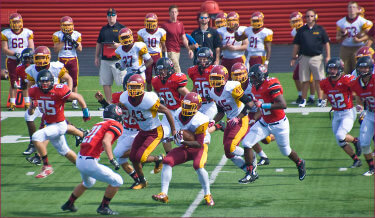The National Federation of High Schools reported the lowest participation numbers in high school football in 19 years, a drop of 3% or close to 30,000 fewer athletes playing high school football (NFHS, 2019).

On the national scale, many believe the research and media coverage of Chronic Traumatic Encephalopathy (CTE) and high concussion rates are the major causes affecting participation rates in high school football (Schonbrun, 2018; Niehoff, 2019). In a Forbes article, Bob Cook (2018) gives analysis and reasons for the drop in numbers for high school football. In addition to CTE concerns, Cook points to the poaching of students from urban and rural schools by charter schools, sports specialization, a decline in the “hero-worship” image of being a football player in high school (e.g. due to competing interests), and the growing popularity and competition from other sports (e.g. lacrosse).
As a coach, we have very little control over the CTE debate, the media or other outside forces. What we do have control over is our coaching style, our coaching philosophy, planning practice, how we teach the game, building player relationships, and how we measure success. As coaches, we need to find out why kids are not coming out for football. Coaches often talk about kids being “different today,” or “kids have too many distractions,” and “kids don’t want to invest the time and effort required to play football.” To “turn the tide” of diminishing numbers in high school football, coaches must first acknowledge this problem exists, start the discussion on how to change it, and come up with realistic and doable solutions that can be applied across all school programs. Therefore, the purpose of this article is to focus on what coaches can control in regard to the decreasing participation numbers in high school football and offer six steps to help you create a positive experience for the athletes under your watch. These suggested steps are aimed at getting you to acknowledge the problem, make you think, and come up with your own ideas and plans of action to turn the tide of diminishing participation numbers in high school football.
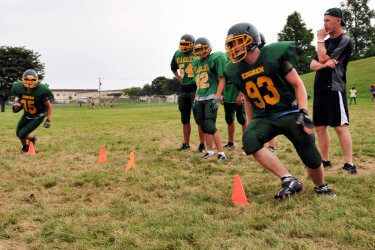
Step 1: Why do they Play?
Focus on proactive measures that will result in making your programs worthy, meaningful, and more enjoyable for students at your school. Find out what the researchers say drives young teenagers to play sports (Apache & Evans, 2004). Then begin to focus on developing goals and plans of action that will draw them into your program. The number one reason young people give for playing high school sports is to have fun (Apache & Evans, 2004). As coaches we know to be proficient in high school football requires practice and off-season conditioning, which demands the hard work ethic, self-discipline, and tough—sometimes painful—workouts and drills. It is rare that a teenager considers this “fun.” Today’s coach must find out how young people define fun.
In my experience, the strongest needs for teenagers are to feel cared for or wanted and to feel good about who they are. Coaches have significant control over this in how they run their practices and workouts and the expectations they set for their players. More importantly, is the coach showing his players how much he cares about them? Is your program heavy in positive feedback, rewards, and does your coaching style emulate compassion and empathy? How about your skills in communicating, planning and organizing your year-round plan? Each of these will help your players believe in your program and more importantly, themselves.
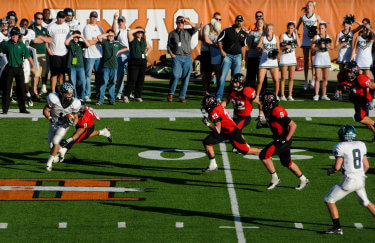 Photo by Randall Chancellor
Photo by Randall Chancellor
Step 2: What is Your Mission?
What is the mission of your program within your school and community? What lessons does your program provide for your players in the big picture of life? A written set of core beliefs and a mission statement will be the guiding basis for all decisions and actions you take as a coach. Ask yourself, does my mission statement and core beliefs promote and encourage enjoyment, worthiness, and purpose in all the experiences my players will endure by being in my program? These are seeds in developing and growing culture in your program – that will command commitment, dedication, and promote enjoyment, worthiness, and fun.
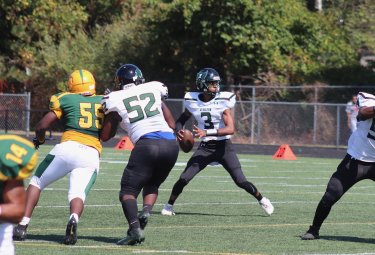
Step 3: Make “High Participation Numbers” Your #1 Goal
High participation numbers should be the ultimate measure of your success and the focus of your energy and decisions. In my experience, football teams with high numbers of juniors and seniors win significantly more games than those with few numbers—and they will likely have more opportunities for championships. Therefore, the higher your numbers, the more wins your teams will achieve. Here are some additional things to consider when you have a greater number of participants: a) the average age will be higher for your team, b) the physical maturity of your players will be greater. c) the total time spent in your strength and conditioning program will be increased, and d) the total number of repetitions in practice and games will be greater.
Two examples of football coaches that were successful by focusing on high participation numbers were Joe Turbeville, who won five state championships at three different schools in South Carolina. He often said, “numbers wins.” Another coach is John McKissick, the winningest football coach of all time at any level, would regularly dressed out 60 plus players every varsity game. In my experience, high participation numbers have a synergistic effect upon your program. However, it is important that you keep your leadership skills, organizational skills, and your ability to teach proper technique and strategy sharp – to capitalize and energizing the advantage that high numbers will provide.
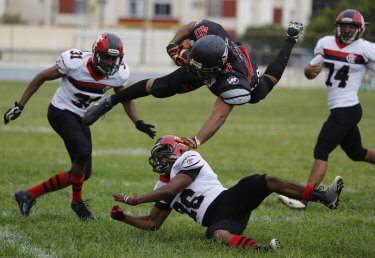
Step 4: Provide a Positive and Meaningful Experience to Every Player
If a student is having a meaningful experience in your program—as a starter or bench warmer—it will never cross his mind to quit the program. Furthermore, he will disseminate positivity and goodness about your program to his parents, friends and future players, especially those who might be thinking of coming out for your team. If students are knocking the door down to be a part of your program, then you must be doing something right. Your players are the best public relations and recruiting messages you will ever send out to your parents and community. Every day your kids go home and interact with their parents and invariably, mom or dad will ask, “What happened at practice?” or “What did the coach say after the game?” Likewise, the same happens when your players interact with their peers every day. This includes what is said on social media. If you are doing something “right,” then your players’ interactions with their parents and peers will have a positive and synergistic effect upon your program. When all of this happens, others will come knocking on your door wanting to be a part of your program. Winning games certainly will provide the experience of fun, satisfaction, and meaningfulness or worthiness. However, engaging every player and winning their hearts and minds through positive, meaningful experiences is significantly more valuable.

Step 5: Take Time to Prepare Your Practice Session
Provide a highly organized and meticulously planned (in writing) practice or workout for your players. Planning a quality practice is one of the nationally recognized 14 legal duties for coaches (NCADA, 2020). If you take this a step further by posting your written schedule, you will be communicating subliminally, “This coach is professional,” “This coach cares about us,” and “This coach means business.”
A coach’s duty in practices and workouts is to make every player good enough to play. Thus, the objective of a coach is to provide maximum quantity and quality repetitions for all players. Find ways for the second and third-string players to be involved and get repetitions throughout your practices. These players will eventually start or play an important role in your program’s success – if not this season, the next for sure. To engage all your players for an entire practice takes hard work (i.e. great planning and organization). The more involved all of your players are in practice will lead to greater mental intensity, greater physical effort, a better quality of repetitions, and better retention of skills and knowledge. The result is they will likely be more focused and have better execution in games. This will often result in more fun and, likely, more wins.
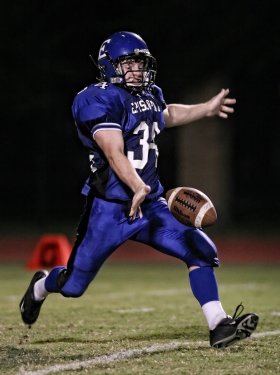
Step 6: Become a Recruiter at Your School
Develop a recruiting plan to attract more players to your program and include actions such as, but not limited to:
- Be visible in your school. Volunteer for the lunchroom, parking lot or bus duty. Get in front of your students daily and often.
- When you see someone that does not play, looks athletic or plays another sport ask them to come tryout. One thing is sure, if you don’t ask, they will never become one of your players. For example, one of our South Carolina Mr. Football winners and an All-SEC receiver in college and did not play his ninth-grade year.
- Peer pressure is a huge force among teens. Get your players to recruit.
- Work with your physical education teachers to develop a simple motor ability test for all incoming freshmen in their classes. Make sure the vertical jump or standing long jump, the single most reliable test item for measuring athletic ability, is on the test. Those who meet your benchmarks for potential ballplayers are ones you will want to recruit.
- Find out who got cut from the basketball or baseball tryouts and ask them to join. These kids usually have excellent athletic ability and ball skills. Don’t forget the track program—football is a game of strength, power, and footspeed.
- Recruit from the soccer program. Strikers, forwards and midfielders usually have good footspeed and will make terrific skill players and defensive backs. Fullbacks can make terrific linebackers. For example, the best free safety I ever coached was a soccer mid-fielder, an All-American in college and played pro football.
- Lacrosse and wrestling are combative sports with high carryover value into the game of football.
- Use social media to promote your program.
- Promote the values (life skills to be learned) in playing football every chance you get.
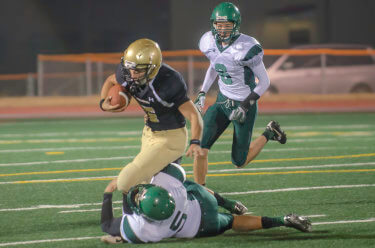
Conclusion
If you really care, as I do, about high school football and its role in our society to teach life lessons, I implore you to seek every idea that will enhance the fun, enjoyment, meaningfulness, and worthiness of playing this great American game. I beg you and your fellow football coaches in your state to go “toe-to-toe” with this issue and make it a priority over the next few years. It is my hope that the football coaches around the country make this a major topic in upcoming clinics, inviting fellow coaches who have teams with high participation numbers to share their number-increasing strategies. Football coaches are known for bragging about the great life lessons our sport teaches young people. If we believe this, why would we not want to have greater numbers of students be a part of our game and be exposed to these great lessons? Let’s do this! Make our game of high school football great again!
References
Apache, R. G., & Evans, C. (2004, March). Increasing physical activity in parent and child through youth sports participation. In Research Quarterly For Exercise And Sport (Vol. 75, No. 1, pp. A5-A6).
Cook, B. (2018, August 31). Why high school football Is dying a slow death (it’s not just concussions). Forbes. Retrieved from: https://www.forbes.com/sites/bobcook/2018/08/31/why-high-school-football-is-dying-a-slow-death-its-not-just-concussions/#7b592abd7540
NCADA (2020). 14 Legal duties of athletics. North Carolina Athletic Directors Association. https://www.ncada.net/page/show/2717789-14-legal-duties-of-athletics
NFHS (2019). Participation in High School Sports Registers First Decline in 30 Years. National Federation of State High School Associations. Retrieved from: https://nfhs.org/articles/participation-in-high-school-sports-registers-first-decline-in-30-years/
Niehoff, K. (2019). The NFHS voice: No linkage to CTE From playing high school football. National Federation of State High School Associations. Retrieved from: https://nfhs.org/articles/the-nfhs-voice-no-linkage-to-cte-from-playing-high-school-football/
Schobrun, Z. (2018, October 18). Amid concerns over concussions, high schools struggle to fill rosters. New York Times. Retrieved from: https://www.nytimes.com/2018/10/29/sports/football-participation.html
